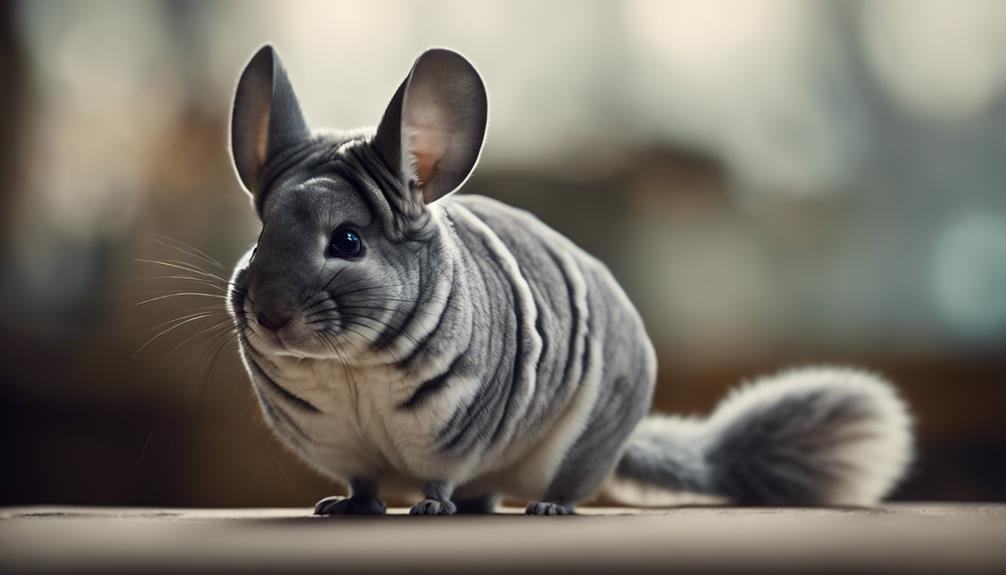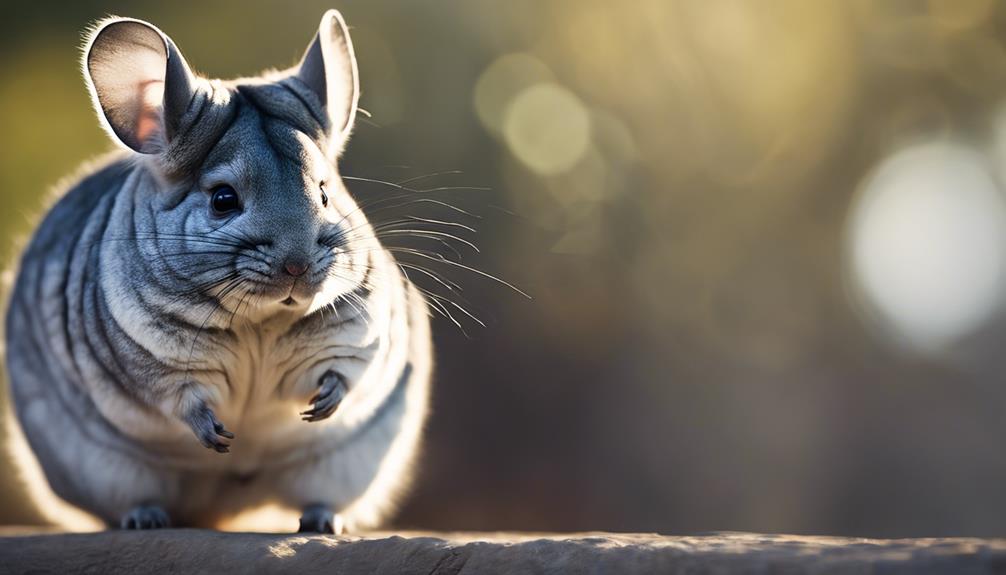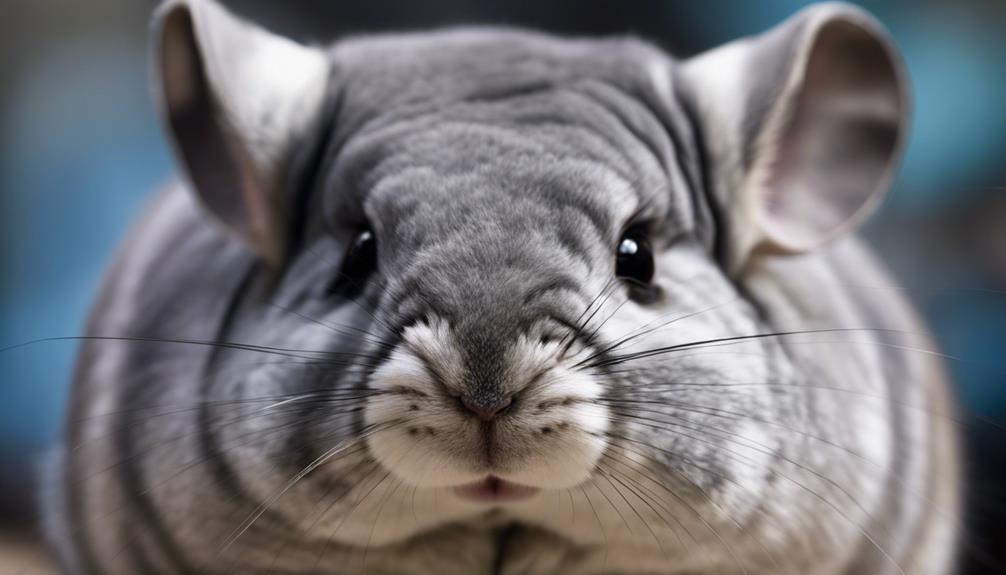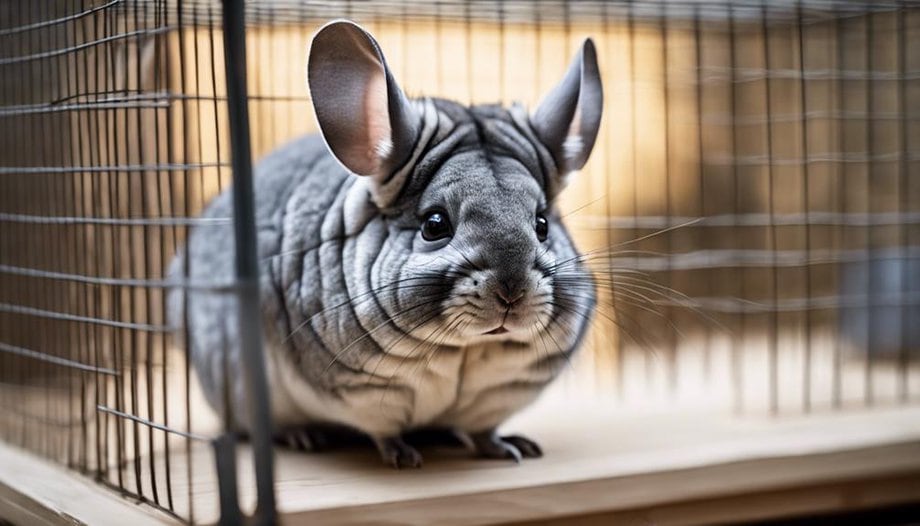How to Identify the Chinchilla Species: A Visual Guide

Chinchillas are small rodents that are native to the Andes mountains in South America. There are two species of chinchillas: the short-tailed chinchilla (Chinchilla chinchilla) and the long-tailed chinchilla (Chinchilla lanigera). The short-tailed chinchilla is larger and has a shorter tail compared to the long-tailed chinchilla. Both species have dense, soft fur that is prized for its quality in the fur trade.
Chinchillas are known for their large ears, big eyes, and bushy tails. They have a distinctive hopping gait and are agile climbers. Chinchillas are social animals that live in colonies in the wild. They are primarily crepuscular, meaning they are most active during dawn and dusk. Chinchillas are herbivores and primarily feed on grasses, seeds, and hay.
In conclusion, identifying chinchilla species can be done by examining their physical characteristics such as size, tail length, and fur quality. Understanding the differences between the short-tailed chinchilla and the long-tailed chinchilla can help in distinguishing between the two species.
Physical Characteristics of Chinchilla Species
When differentiating between chinchilla species, one must closely examine their physical characteristics for distinct features. Genetic markers play a crucial role in species identification. By analyzing specific genes unique to each species, researchers can differentiate between closely related chinchilla species.
Another important aspect to consider is the dental characteristics of chinchillas. Each species has specific dental features, such as the number and arrangement of teeth, which can aid in distinguishing one species from another. Dental examinations can provide valuable insights into the evolutionary history and ecological adaptations of chinchillas.
Understanding the genetic markers and dental characteristics of chinchillas is essential for accurately identifying different species within this group. By combining genetic and dental analyses, researchers can paint a detailed picture of the evolutionary relationships and morphological variations among chinchilla species, ultimately contributing to the broader understanding of these fascinating creatures.
Fur Color Patterns for Identification

To distinguish between chinchilla species based on their fur color patterns, researchers meticulously analyze the specific pigmentation variations present in each species. Coat texture differences and fur length variations play crucial roles in identifying chinchilla species accurately.
The coat texture can range from dense and plush to soft and silky, with variations in thickness and undercoat density. These texture differences can affect how the fur reflects light, creating unique visual patterns that aid in species identification. Additionally, fur length variations, such as short, medium, or long fur, contribute to the overall appearance of the chinchilla and can vary between species.
Tail and Ears Distinctions

Chinchilla species can be distinguished by variations in tail length, with some species having longer tails compared to others.
Differences in ear shape also play a significant role in identifying chinchilla species, with certain species exhibiting distinct ear shapes.
Additionally, color patterns on the tail can provide valuable clues for differentiating between chinchilla species.
Tail Length Variations
Tail length variations in chinchilla species can provide important distinctions, particularly when comparing tail and ear characteristics. Behavioral tendencies and genetic variations play a role in determining tail length, with certain species exhibiting longer or shorter tails based on their natural habits and genetic makeup. Below is a table summarizing the tail length differences among various chinchilla species:
| Chinchilla Species | Tail Length | Description |
|---|---|---|
| Species A | Short | Typically seen in species with more arboreal habits |
| Species B | Medium | Common in species with a mix of ground and arboreal behaviors |
| Species C | Long | Found in species that predominantly reside on the ground |
Understanding these tail length variations can aid in correctly identifying different chinchilla species based on their tail characteristics.
Ear Shape Differences
Ear shape differences in chinchilla species can offer additional visual cues for distinguishing between various species, complementing the distinctions provided by tail length variations. When comparing ear shapes in chinchillas, it's essential to pay attention to subtle variations that may assist in accurate identification. Here are some key points to consider:
- Round Ears: Some chinchilla species have round ears that give them a softer, more gentle appearance.
- Pointed Ears: Other species exhibit pointed ears, adding a sleek and sharp aspect to their overall look.
- Ear Size: The size of the ears can vary significantly between species, providing a useful metric for differentiation.
Identifying chinchilla species based on ear shape comparison can present challenges due to similarities, necessitating a keen eye for detail in species differentiation.
Color Patterns on Tail
When examining chinchilla species for identification purposes, the color patterns on the tail provide distinctive features that can aid in distinguishing between different species. Tail markings are crucial in differentiating chinchilla species, with variations in banding, spotting, and solid colorations.
The distribution of these patterns along the tail can also vary, ranging from uniform to irregular patterns. Chinchillas exhibit specific behaviors related to their tail, such as using it for balance and communication. Tail color is influenced by genetics, with color mutations affecting the hue and intensity of markings. Understanding the genetic basis of tail coloration can help in species identification.
Size and Body Shape Variances

Size and body shape variances in chinchilla species can be distinguished through careful observation of their physical characteristics. Chinchillas exhibit differences in weight distribution and body proportions, which are key factors in identifying the species accurately.
- Weight Distribution: Chinchillas vary in weight distribution, with some species having a more robust and heavier body structure compared to others. This can be observed by noting the distribution of mass along the chinchilla's body.
- Body Proportions: Different chinchilla species display varying body proportions, including differences in the length of their limbs, size of their heads, and overall body shape. These proportions can aid in differentiating between species with similar color patterns.
- Posture and Stance: Chinchillas may also exhibit distinctive postures and stances, showcasing variations in how they carry their bodies. Some species may have a more upright stance, while others could appear more compact or elongated.
Understanding these size and body shape variances is essential for accurately identifying chinchilla species based on their physical attributes.
Facial Features Variability

Chinchilla species exhibit a remarkable range of facial features, including diverse nose shapes, variations in eye color, and differences in ear sizes. These characteristics can serve as key identifiers for distinguishing between different chinchilla species.
Understanding the variability in facial features among chinchillas is crucial for accurate species identification.
Nose Shape Diversity
With what distinguishing characteristics can one identify the different Chinchilla species based on their nose shapes? Chinchilla species can be differentiated by various nose shape features. Here are some key aspects to look out for:
- Rounded nose tip: Some Chinchilla species have a rounded nose tip, giving them a softer facial appearance.
- Pointed nose tip: Other species exhibit a pointed nose tip, which adds a more defined look to their face.
- Upturned nose: Certain Chinchilla species may have an upturned nose, creating a unique charm to their facial structure.
These nose shape diversities, along with other facial features like ear tuft variations and whisker length differences, contribute to the distinct characteristics of each Chinchilla species.
Eye Color Variations
Displaying a spectrum of hues, Chinchilla species exhibit intriguing variations in eye color, contributing to the overall facial features variability. The eye color of chinchillas can range from dark brown to ruby red, with some individuals even displaying shades of pink or blue.
These variations aren't only aesthetically appealing but also hold significance in understanding the behavioral tendencies and genetic predispositions of these species. Studies have shown that certain eye colors may be linked to specific genetic traits, influencing aspects of their temperament and social interactions.
Ear Size Differences
The size of chinchilla ears varies among different species, contributing to the facial features variability observed within these rodents. Chinchilla ear shape can range from round and small to large and oval, depending on the species. This distinction aids in differentiating between various chinchilla species based on their unique ear characteristics.
Furthermore, fur color around the ears can play a role in identifying specific chinchilla species, as some have fur that matches the color of their ears while others exhibit contrasting colors. Understanding these subtle differences in ear size, shape, and fur color is crucial for accurately identifying and distinguishing between chinchilla species.
- Ear shape: Varies from round and small to large and oval.
- Fur color: Some species have matching fur color around the ears, while others have contrasting colors.
Behavior and Temperament Clues

Behavior and temperament in chinchillas can vary based on factors such as age, socialization, and environment. Social behaviors play a crucial role in understanding chinchilla behavior. These rodents are social creatures that thrive on companionship, often displaying playful interactions with cage mates or humans. Personality traits can also differ among chinchillas, with some being more outgoing and curious, while others may be shy or reserved.
Communication signals are essential in deciphering a chinchilla's mood and intentions. Chinchillas may vocalize through sounds like chirps or squeaks to express excitement or distress. Understanding these cues can help in providing appropriate care and handling techniques. When interacting with chinchillas, gentle and calm handling is recommended to build trust and prevent stress.
Observing a chinchilla's behavior and temperament over time can provide valuable insights into its overall well-being. By recognizing social behaviors, personality traits, communication signals, and employing proper handling techniques, chinchilla owners can foster a positive and enriching relationship with their furry companions.
Environment and Habitat Preferences

Chinchillas exhibit distinct preferences for their environment and habitat, showing particular inclinations towards specific conditions for optimal well-being. These small rodents have specific requirements when it comes to their diet preferences and climatic adaptations:
- Diet preferences: Chinchillas are herbivores, primarily consuming grasses, leaves, and seeds in the wild. In captivity, they should be provided with a diet high in fiber, such as hay and specially formulated chinchilla pellets, to maintain their digestive health and overall well-being.
- Climatic adaptations: Chinchillas are native to the Andes Mountains of South America, where they've adapted to high altitudes and cooler temperatures. They're sensitive to heat and humidity, so their habitat should be kept cool and dry to prevent heat stress and fur-related issues. Providing proper ventilation and avoiding direct sunlight is crucial for their comfort and health.
Understanding and catering to these diet preferences and climatic adaptations are essential for creating a suitable environment for chinchillas in captivity, ensuring they thrive and remain healthy.
Frequently Asked Questions
Are Chinchillas Social Animals That Need to Live in Groups or Can They Live Alone?
Chinchillas are social creatures, thriving in groups that provide comfort and companionship. While they can adapt to solitary living, their well-being is enriched through interactions within a chinchilla community, echoing nature's harmony.
Can Chinchillas Be Trained to Do Tricks or Follow Commands?
Chinchillas can be trained using clicker training. Understanding chinchilla behavior is crucial. Training methods should align with their intelligence level. Patience and positive reinforcement are key. With consistent practice, chinchillas can learn tricks and follow commands.
How Long Do Chinchillas Typically Live in Captivity?
In captivity, chinchillas typically live an average lifespan of 10-15 years. Providing proper care, nutrition, and environmental enrichment, like chew toys and dust baths, can promote their well-being and longevity.
Do Chinchillas Require a Specific Diet or Can They Eat a Variety of Foods?
Chinchillas require a specific diet for optimal health. Dietary restrictions focus on avoiding high-fat foods to manage weight. Nutritional supplements can be beneficial, but a balanced diet with a variety of hay, pellets, and limited treats is key.
Are There Any Specific Health Concerns or Diseases That Chinchillas Are Prone To?
Chinchillas are susceptible to common illnesses like dental problems, respiratory issues, and gastrointestinal stasis. Preventative care involves providing a balanced diet, regular veterinary check-ups, maintaining proper hygiene, and ensuring a stress-free environment.











